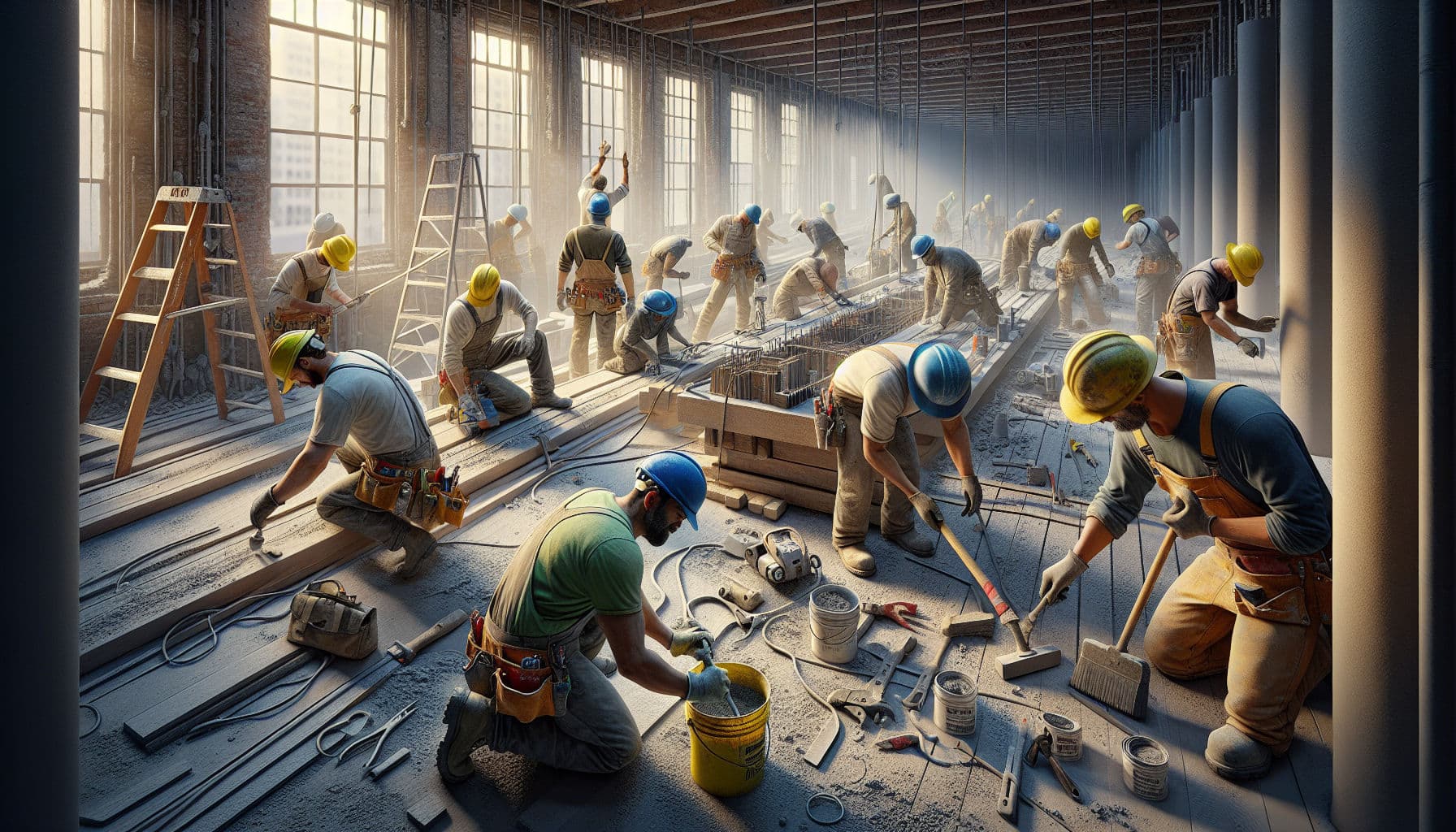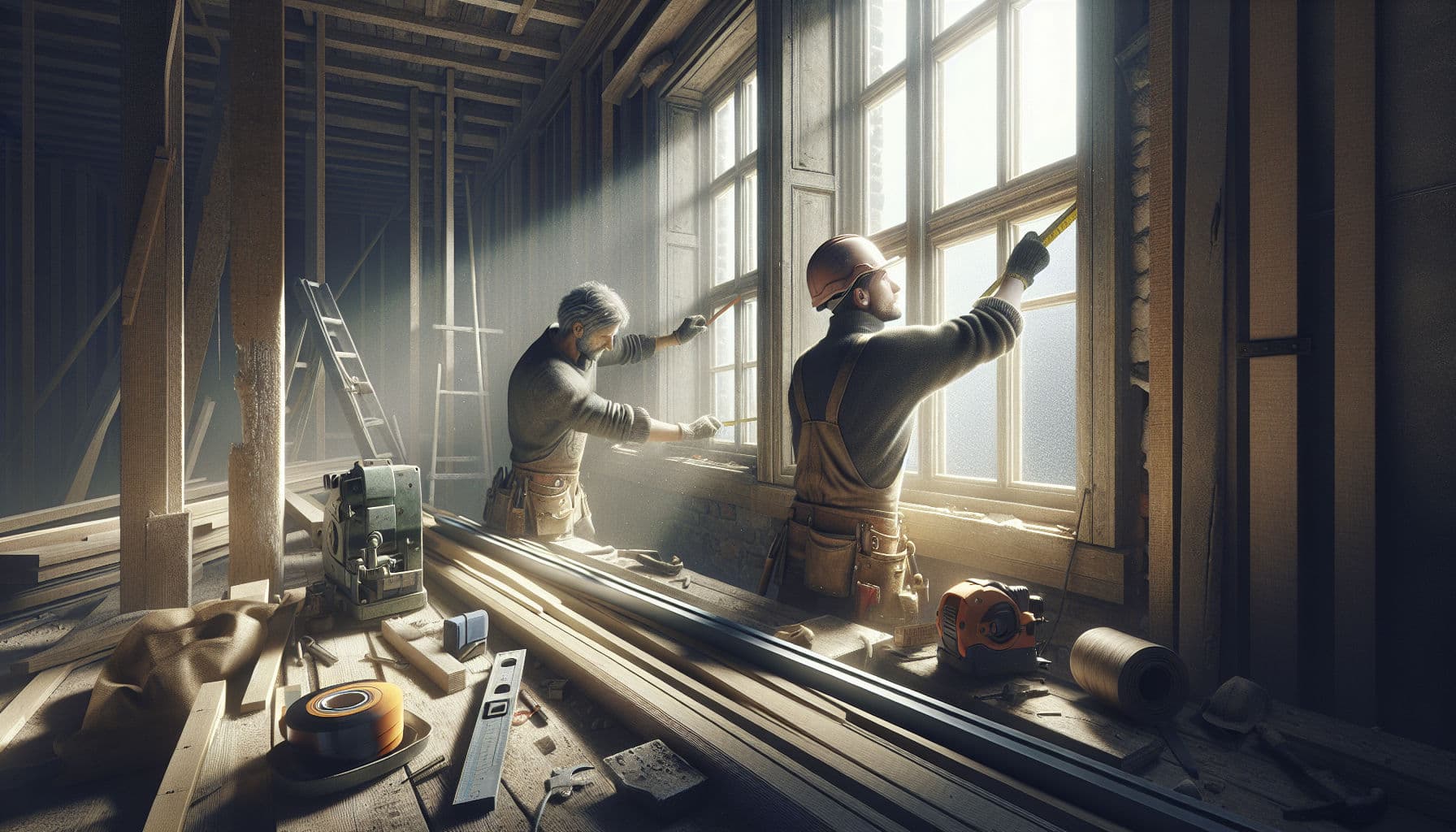Proven Speed To Lead For Contractors
Proven speed to lead for contractors and home improvement lead management tips. Win more jobs with fast, professional follow-up. Get the 5-step plan.
Table of Contents
- Introduction
- Lead Priorities In 2025
- First Call That Converts
- Efficient Site Visits
- Follow-Up That Wins
- FAQ
- Conclusion
Introduction
When a homeowner asks for a quote, minutes matter. Fast, clear responses increase your chance of getting the site visit, the second conversation, and the signed proposal. Here’s why this works, what to change in your daily routine, and how to put it in place without burning out your evenings. I’ll share a practical system built on real jobs in France, Italy, and Spain—and show where a light layer of tech actually helps.
Home Improvement Lead Management: What Matters In 2025
Most small firms don’t lose work because they’re bad at the job—they lose it in the quiet hour after an inquiry lands. Harvard Business Review found companies that followed up within an hour were nearly seven times more likely to qualify a lead than those that waited longer. In home renovation, that window is often tighter because homeowners reach out to 2–3 firms at once.
What to prioritize now:
- Speed window: Aim to call within 5–10 minutes during business hours; within 30 minutes, send a short text if you can’t call.
- Channel coverage: Leads arrive via Google, local directories, Instagram, email, and WhatsApp. Funnel all new inquiries to a single place you actually check.
- Clear next step: Every first reply should point to one action—book a call or book a visit. Fewer choices, more progress.
Regional nuance that matters:
- France: Midday calls around 12:30–13:30 often reach voicemail; try 11:30–12:00 or 14:00–15:00. August slows many approvals—front-load June–July.
- Italy: Condo renovations often involve multiple decision makers (amministratore + owners). Ask early who signs and pays.
- Spain: Expect vacations concentrated in late July–August. Move quickly in May–June to secure September starts.
A minimal, reliable workflow:
- Capture: One inbox for all leads. A shared email alias and a single WhatsApp Business number help.
- Acknowledge: Auto-reply confirms receipt and says when you’ll call.
- Call fast: Short call to confirm scope, address, timing, and go/no-go.
- Book the visit: Offer two time slots within 72 hours.
- Record notes: Names, decisions, constraints. If you can’t find notes in 10 seconds, the process will fail.
Practical tool tip: If you already juggle WhatsApp, email, and calls, use a simple hub so nothing gets buried. Donizo centralizes client threads and notes per job so your team sees the same context, not a screenshot mess.
Builder First-Call Framework That Converts
Keep the first call to 7–10 minutes. You’re confirming fit, not designing. Here’s a field-tested flow and phrases that keep it professional:
- Set the frame (30 seconds)
- “Thanks for reaching out. I’ve got a few questions so we can book a useful visit. This takes about five minutes.”
- Confirm the basics (2 minutes)
- Location and type: apartment/house, floor, elevator, condo rules.
- Scope headline: kitchen refresh vs. full strip-out; bathroom size; facade or interior.
- Must-haves: accessibility, energy upgrades, layout changes.
- Time window (1 minute)
- “When do you want the work to start and finish?”
- Flag hard deadlines (baby due, holidays, tenant move-in).
- Budget range check (2 minutes)
- “For projects like this we usually see totals between €X and €Y depending on finishes. Does that feel in the right ballpark?”
- If they won’t share a number: “That’s fine. After the visit I’ll show you options at two levels so you can decide.”
- Decision process (1 minute)
- “Who else should be on the visit so we cover questions once?”
- “How many quotes are you collecting? When do you plan to decide?”
- Next step (1 minute)
- Offer two slots in the next 2–3 days. “I have Wednesday 17:30 or Thursday 08:30; which works?”
- Send a calendar invite while on the call.
Pro tips from sites across FR/IT/ES:
- Always verify photos or a short video before the visit. It avoids wasted trips (e.g., no lift for a 6th-floor demolition). Ask for 5–6 clear shots including access.
- Keep a short do/don’t list you can text after the call: how to clear the room, keys, pets, parking, and neighbor notices.
- Don’t price on the phone unless it’s a tiny standard task. Use “range” language to keep trust without boxing yourself in.
CTA: If you want the call to feed the estimate without extra typing, record quick voice notes right after you hang up. Donizo turns site and call notes into structured items in your proposal so you don’t rewrite the same details at 22:00.
Site Visit Scheduling Process That Saves Time
Site visits are where you win trust—or lose half a day to traffic and no-shows. A lean system prevents chaos.
Before you leave:
- Confirm in writing: date, time, full address, parking/entry code, who will attend, approximate duration.
- Route planning: Cluster visits by area. In Paris, Milan, or Madrid, two tightly grouped visits can beat three scattered ones.
- Visit pack: Basic PPE, tape, laser measure, moisture meter for bathrooms, and a printed checklist for “photos needed.”
On site, capture what matters:
- Access: stairs, lift size, path from street to work area.
- Services: shutoffs, panel capacity, drainage fall, vent routes.
- Constraints: listed building rules, condo quiet hours, waste removal point.
- Risks: damp, hidden beams, asbestos risk indicators (and legal diagnostics where required before demolition in France).
After the visit (same day):
- Send a brief recap with 5–7 bullet points and the agreed next step. Homeowners remember tone and clarity more than the tape measure reading.
- Log unknowns and dependencies (e.g., need condo approval on window change). If it depends on someone else, write it down.
Time savers we’ve seen pay off in under a week:
- Book with a calendar link offering only two slots; more choice means slower decisions.
- Use templated SMS reminders 24 hours before the visit, and again one hour before. Include parking note.
- Snap photos in a single album named “ClientName_Address_Date” so anyone on your team can find them later in seconds.
How tech helps without becoming a burden: Put client notes, photos, and messages in one job thread. With Donizo, your recap, client replies, and the evolving scope sit together—so when you price, you see the history and avoid missed items that kill margin.
Proposal Follow-Up Timing That Wins Work
You’ve sent the proposal. Now the difference between a “maybe” and a scheduled start is rhythm. Most contractors either chase too late or too often. Use a respectful cadence that keeps momentum without pressure.
A proven 4-touch rhythm (adjust for local holidays):
- T+24 hours: Short check-in. “Just confirming you received the proposal and the two options we discussed. Happy to walk through it on a quick call.”
- T+3 business days: Add value. Share one relevant note: a sketch, an alternative material with shorter lead time, or an energy-saving option (France 5.5% rate jobs must meet criteria—flag if applicable). No price cut yet.
- T+7 business days: Decision nudge. “We’re holding the week of [date]. If you’d like that slot, I’ll need your go-ahead by [date].” Scarcity works when it’s true.
- T+14 business days: Close or park. “If timing has shifted, no problem. I can archive the file and reopen when you’re ready.” Then move on.
Craft messages that feel local and human:
- France: Clear, polite, not flowery. Keep subject lines practical: “Devis salle de bains – point rapide.”
- Italy: Warm but direct. If the amministratore is involved, copy them on scheduling notes.
- Spain: Friendly tone works well; WhatsApp is widely accepted for quick updates, but always summarize key decisions by email.
Two small levers that raise acceptance rates:
- Offer two versions: baseline and upgraded finishes. People like to choose, not invent.
- Show a simple timeline: demo, rough-in, install, finish—weeks, not dates. It sets expectations without locking you to a day you can’t control.
Where software earns its keep: Track when a proposal was opened, when you followed up, and what was said. Donizo ties proposals, messages, and approvals to the job record so you know exactly where things stand and who owes what when you invoice.
Frequently Asked Questions
What response-time goal should a small team set?
Aim to call within 5–10 minutes during working hours. If you’re on site, send a quick text acknowledging the request and propose two times for a call. Outside hours, a same-evening SMS and a morning call keep you first in line without burning your weekend.
How do I handle inquiries that arrive at night or on weekends?
Acknowledge receipt with an automated or saved-message reply, set expectations (“We’ll call you at 09:00 Monday”), and add the lead to your Monday call list. Avoid long back-and-forth after hours; protect your schedule so you can keep weekday promises.
What if a prospect won’t share a budget?
Use ranges tied to scope: “Projects like this typically land between €X and €Y depending on finishes.” Then propose a site visit to firm up quantities. After the visit, present two options (baseline vs. upgraded) so they can choose a level without naming a number.
How can I keep track of conversations across WhatsApp, SMS, and email?
Pick one hub for each job so messages aren’t scattered. Centralize notes, photos, and decisions to protect your margin and speed. Tools like Donizo keep the project thread, proposals, and invoices together so anyone on your team can jump in.
Conclusion
Respond faster, keep the first call short and focused, book the visit within 72 hours, and follow a steady cadence after you send the proposal. That’s the play that wins work in 2025 across France, Italy, and Spain. The firms that adopt this rhythm don’t look flashier—they simply make it easier for homeowners to say yes.
If you want less admin and more wins, run this system in one place. Use Donizo to capture leads, log notes by voice, send clear proposals with correct VAT, and track follow-ups without rummaging through chats. Set it up once, and buy back 5–10 hours a week you can spend on the tools—or with your family.





